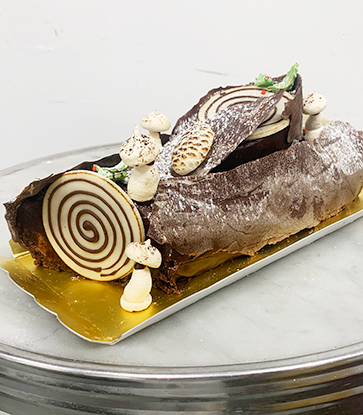Just ask executive sous chef Philippe Duc from Ash & Elm, a Michelin Guide-listed restaurant at InterContinental Singapore. He’s arguably the last say on building charcuterie boards as the space includes an entire kitchen devoted to charcuterie and cheese. Here, he shares with us eight tips on building a better board.

The type of board used for the presentation of charcuterie really depends on how aesthetically pleasing and the number of persons the platter would serve. I would always recommend using whole pieces of wood, beech wood if possible. Beech is a light-coloured hardwood, typically with its own grain patterns. Lighter coloured wood would better allow you to showcase the charcuterie on your platter.
2 Choose Your Meats
I recommend incorporating a mixture of ham, saucisson and smoked meats for variety. Parma and Iberico ham would work well as not only are they widely available the gourmet grocers, they are also tasty and complementary with other cured meats. The Bayonne ham from France is another recommended option for its sweet taste.

Pickles, olives, gherkins and capers are essential as most of these are usually soaked in vinegar or brined prior, and will help to cut the fattiness and richness of the cured meats served on the charcuterie board.
4 Play With Textures
The building of a charcuterie board takes into account a variety of factors – shapes and sizes, colours, flavours and of course textures. Alongside firm textured cured meats like the sausages, chorizo and ham, a nice pâté, croûte, rillettes or terrines would offer a contrast in texture. These creamy and soft textures would add a different dimension of flavour and taste.

Whilst bread and crackers can both be served alongside the cured meats on the charcuterie board, bread would make a better option as the moisture from the bread and the sourness from the use of natural yeast or levain, would add a hint of acidity that would pair well with the saltiness of the cured cuts. Crackers would essentially work better with the cheeses for added crunch.
6 Don’t Forget The Cheese
I recommend 3 types of cheeses that will be more widely accepted by most diners – Comté which is a hard cheese with a nice nutty flavour, Tomme, which is a French cheese that has an earthy flavour and the Burrata, a fresh creamy cheese which will provide more acidity when paired with the cured meats, in particular, the Parma ham.

Most charcuterie platters bear an overarching salty profile, and are rich in flavours. Hence, if any other flavours are to be added, it would have to be something that is mildly sweet or refreshing. A sweet jam or onion chutney would provide sweetness that would pair well. Fruits like the rock melon, would serve as a refreshing option.
8 Round It Up With a Good Tipple
White wine, in particular, one that is dry and less sweet. White wine, will not only add acidity to the cured cuts, but will also serve to clear the palate for the start of the meal.
























